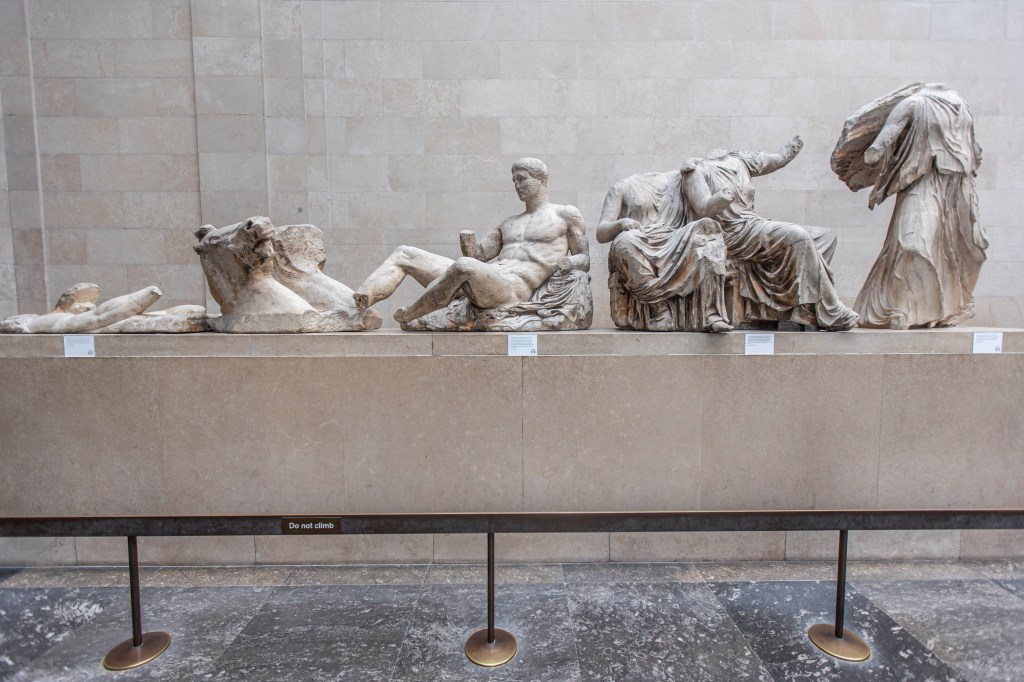The Parthenon Marbles were once vibrantly colored with intricate patterns, according to a new study published in the journal Antiquity on Wednesday.
Originally intended to decorate the steps of the Athenian Parthenon Temple, the Parthenon Marbles were crafted more than 2,500 years ago by the ancient Greeks. Their fragments are now held by the British Museum in London, whose possession of them has ignited a contentious and ongoing restitution debate.
Though it might not be immediately visible along the surface, the deities and mythical creatures depicted in the statues were once painted in bright Egyptian blue, white, and purple hues. The colors represented the figures’ origins: the water from which they rose, the snakeskin of a sea serpent, background spaces between figures, and figurative patterns on the gods’ robes.
For centuries, it was assumed that Greek and Roman sculptures were muted in color or didn’t have any color at all. This common misconception came from years of viewing pristine stone and clay that had experienced decay and had been scrubbed clean. The same is true of the Parthenon Marbles, which weren’t prepared in a way that would allow their paint to properly adhere to the stones’ surfaces. As a result, previous historical restorations actually went so far as to remove traces of paint found on the figures.
Using luminescent imaging, archaeologists were able to find hidden chemical elements from traces of paint on the sculptures’ surfaces. The team found evidence of hidden patterns, such as floral designs and figurative depictions, that were created using a mix of four pigments.
The blue was made by the Egyptians and used often by ancient Greeks and Romans, the purple tint was produced using previously unknown ingredients, and the two whites were crafted from the mineral gypsum and a bone white pigment made from bone ash.
The color was “as visually important as the carving,” the researchers wrote in the study. Based on the paint, the Parthenon may have been much more brightly colored than was previously thought.



